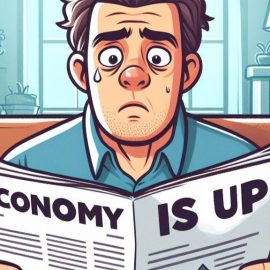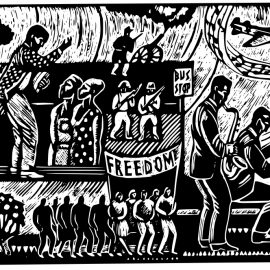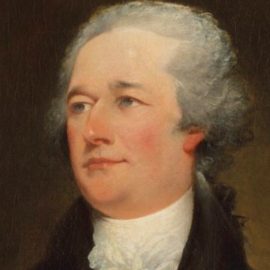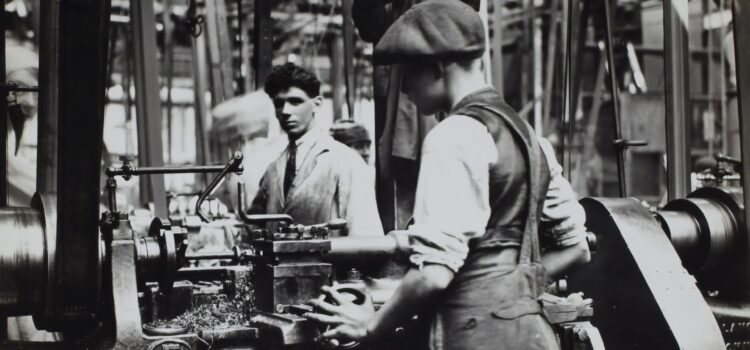
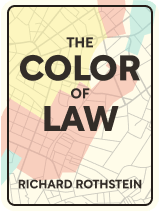
This article is an excerpt from the Shortform book guide to "The Color of Law" by Richard Rothstein. Shortform has the world's best summaries and analyses of books you should be reading.
Like this article? Sign up for a free trial here .
What is the relationship between labor market discrimination and income inequality? What was the impact of discrimination in unions on racial income inequality?
Labor market discrimination depressed Black wages and ensured they missed out on the high wages available to white employees. Discrimination in labor unions that shut out African Americans deprived Blacks of a powerful voice that could ensure wage parity.
Read on to learn more about how labor market discrimination leads to racial income inequality.
How Labor Market Discrimination Created Racial Income Inequality
Commentators inclined to argue against the fact of de jure segregation often point to other explanations for that segregation. One such explanation they put forward is the well-documented disparity between African Americans’ and whites’ incomes. According to this argument, racial residential segregation isn’t the product of purposeful governmental policy but rather African Americans’ lower incomes—if African Americans had higher earnings, they could live wherever they want, including areas where whites predominate.
However, this argument fails to account for the public policies whose express intent was to depress African American wages. In other words, Black Americans’ lower average incomes and wealth were too the product of purposeful government (in)action—and so part of the structure of de jure segregation.
In the following sections, we’ll trace the long history of labor market discrimination against African Americans before turning to the specific actions taken by entities like labor unions and the Fair Employment Practices Committee.
Labor Market Discrimination From Reconstruction to the New Deal
The story of African Americans’ unfair treatment in the American labor market begins in the aftermath of the Civil War. Although famously promised “40 acres and a mule” by the Union at the conclusion of the war, many former enslaved people ended up sharecroppers—essentially indentured servants on the land of their former owners. Sharecroppers worked portions of the plantation in exchange for a cut of the crop, but absurdly punitive rental and living costs meant that African Americans often ended up in debt to the plantation owner.
Law enforcement contributed to the peonage of newly freed enslaved people by arresting them for petty offenses and then, when they couldn’t afford fines or court fees, selling them to business owners. For example, between the end of Reconstruction and the beginning of WWII, more than 100,000 African American prisoners were working in US mines and factories.
With the coming of the New Deal came an array of programs intended to mitigate the effects of the Great Depression, among them Social Security, employment programs, minimum wage protections, and greater recognition of labor unions. Because FDR needed southern Democrats’ votes to pass New Deal legislation, he allowed exclusions into the laws that specifically prevented African Americans from reaping their benefits. For example, the labor union and wage protections included in the laws didn’t apply to workers in agriculture and domestic service, two industries whose workers were predominantly African American. The result was stagnant wages for a majority of African Americans.
In fact, the National Recovery Administration (NRA), the agency responsible for implementing and enforcing the new wage protections, excluded African Americans with brutal efficiency. For example, within the category of industrial work—which featured both white and Black workers—the NRA denied wage-and-hours standards to canning, citrus packing, and cotton ginning workers. These workers were predominantly African American.
And, due to pressure from the American Federal of Labor (AFL), the Wagner Act—which established collective bargaining rights for private-sector employees—was amended to allow unions legal recognition even if they excluded African Americans from membership. Some newly recognized unions used their power to have African American workers fired and replaced with whites.
Labor Market Discrimination During World War II
Unions continued to be a vehicle for labor market discrimination during World War II. With the co-option of heavy industry for the war effort came management–union partnerships that, more often than not, were explicitly discriminatory.
For example, in the San Francisco Bay Area, powerful unions like the Marine Laborers Union (30,000 members) and the Steamfitters Union (17,000 members) negotiated agreements with companies so that only union-referred workers could be hired. These unions then refused to refer African Americans.
Other unions, when forced by labor demand to admit African Americans, simply ensured that their African American members didn’t enjoy the same benefits as their white members. The Boilermakers union, for example, established auxiliary chapters for African Americans. Members of the auxiliaries paid full dues but couldn’t file grievances or vote in union elections. They were also prohibited from foreman positions if they would be supervising whites.
The Fair Employment Practices Committee
Bending to pressure from civil rights icon A. Philip Randolph, president of the Pullman car porters’ union, FDR signed an executive order in 1941 prohibiting discrimination by organizations involved in war production. The order established the Fair Employment Practices Committee (FEPC), an agency designed to police discrimination in the war industries and empowered to recommend the cancellation of contracts in the case of discrimination.
Unfortunately, the FEPC failed repeatedly to stop or remedy discrimination among firms engaged in the war effort. One problem it faced was poor management. The FEPC’s first chairman was removed after he praised discrimination in defense plants (although he remained a member of the committee). Another issue was simple ineffectiveness. The Roosevelt administration’s first priority was winning the war, and it tended to look the other way when essential firms balked at the FEPC’s mandate.
For example, when Lockheed and Boeing were forced to hire African Americans for high-earning positions due to demand for their products, the firms offered Black workers lower compensation and fewer benefits than their white counterparts without repercussions from the FEPC. Likewise, Standard Steel in Kansas City refused the FEPC’s recommendations, emphasizing that it had never hired an African American in its 25 years of existence and wasn’t about to start.
Labor Market Discrimination in the Postwar Era
After the war, although some unions voluntarily desegregated, others continued to exclude African Americans and nevertheless maintain their NLRB certification. Even after John F. Kennedy banned unions from excluding African Americans in 1962, some continued to discriminate: The most powerful US Postal Service union, for example, in certain areas denied African Americans membership into the 1970s.
Because African Americans were shut out of unions during the war and after, they missed out on the high wages negotiated for union workers in industries like shipbuilding and housing construction. Although the NLRB ceased to certify white-only unions in 1964, no effort was made to compensate previously excluded Black workers. In short, even after African American workers were allowed to join unions, they were already well behind their white counterparts economically.
(Discrimination in unions—and failure on the part of the NLRB to catch it—persists to this day. In 2015, the New York City sheet metal workers union was ordered to pay its African American members $13 million because, from 1991 to 2006, Black union members had received fewer job assignments than their white peers.)
Another post-war federal program whose discriminatory practices contributed to racial economic disparities was the GI Bill. Intended to provide returning WWII veterans with financial support for housing, education, and job training, the GI Bill’s benefits were frequently denied to African Americans. One reason for this was that dishonorably discharged soldiers were ineligible for benefits, and Black soldiers were unfairly and disproportionately dishonorably discharged, sometimes for protesting against segregation.
How Tax Assessors Depressed African American Wealth
Aside from labour discrimination, one of the most insidious ways African Americans were deprived of wealth in this era was through discriminatory property assessments. A municipality determines a property owner’s property tax by multiplying the assessed value of the property by a municipally established tax rate. Historical tax assessment evidence suggests that properties owned by African Americans were frequently assessed at higher values relative to their market values than properties owned by whites. The effect of this disparity was that African Americans shouldered a higher tax burden than whites in a given municipality.
For example, a study of property assessments in Boston in 1962 found that properties in Roxbury, a predominantly African American neighborhood, were assessed at 68% of market values whereas properties in West Roxbury, a predominantly white neighborhood, were assessed at 41%. A 1979 study of assessments in Chicago found that assessments in Bridgeport, an all-white and fiercely segregationist neighborhood, were 50% lower than the legally prescribed ratio; in nearby North Lawndale, a predominantly African American neighborhood, assessments were 200% higher than the legal ratio.
The disproportionate tax burden borne by African Americans had an array of ramifications, including property distress due to a lack of funds for maintenance and eviction due to tax liability.

———End of Preview———
Like what you just read? Read the rest of the world's best book summary and analysis of Richard Rothstein's "The Color of Law" at Shortform .
Here's what you'll find in our full The Color of Law summary :
- How racial residential segregation is the result of explicit government policy
- The three reasons why racial segregation is so difficult to reverse
- The steps that could lead to a more integrated and equitable society


